- Interpret the Scriptures literally
- Do Not accept Religious pluralism
- Pursure the personal experience of God's presence
- Oppose 'Secular Humanism'
- Endorse conservative political goals
-
.
.
John J. Macionis
&
Drew Hurley
Santa Fe Community College
.
For Use With:
John J. Macionis, Sociology, 6th ed., Prentice-Hall, 1997
.
.
Religion: Basic Concepts
Functions of Religion
Types of Religion
Forms of Religious Organization
Religosity
Religion and Social Change
World Religions
Religious Trends In the U.S.
.
.
.

Religion: Basic Concepts:
Profane
Sacred
Ritual
Belief
Faith
.
.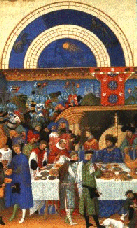
Societal Functions of Religion
Ongoing structural interdependence
Support for political institutions
Religious Mission
Community Service (Charity)
Education
Leadership
Next Page
.
Individual Functions of Religion
Meaning, Reference and Value
Identification
Sanctification and Social Support
Social Control and Social Change
Next Page
.
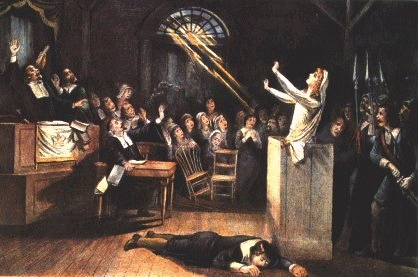
Constructing The Sacred: Symbolic-Interaction Analysis
.
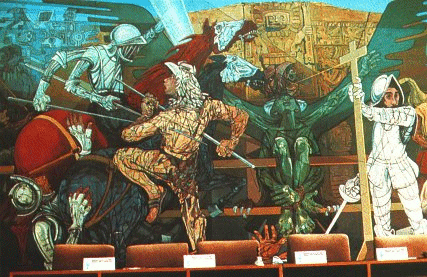
Inequality and Religion: Social-Conflict Analysis

Religious Boundaries
Sacred versus Profane
Ritual and Catechism
Institutional Autonomy
.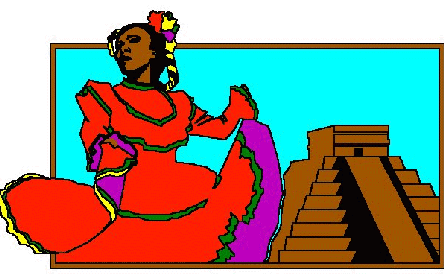
Simple Supernaturalism:
Mana (Blessings & curses), Spirit Forces, Superstitions
Animism:
Identification with Animal spirits, Magic, Shamanism
Next Page
.
Theism:
Polytheism, Monotheism, Deism, Pantheism
Abstract Ideals:
Taoism, Philosophical Ethics, Theosophies

Ecclesia
Denomination
Sect
Cult
Next Page
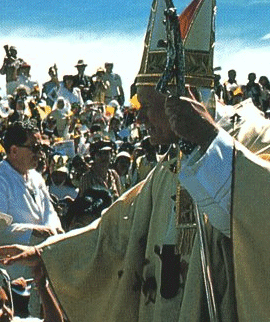
Claims membership of everyone in society
Next Page
Has powerful bureaucracy of trained officials
Supports government authorities
Is supported by Government authorities
Is integrated into all institutions
Consistently sanctions community activities
Birth in society conveys religious membership
Has substantial holding of property
Maintains an orthodox theology

Next Page
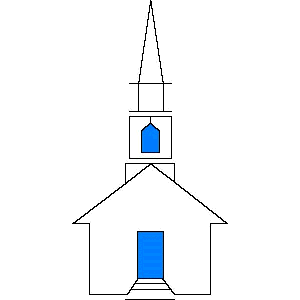
Actively maintains a separation of church and state
No one Denomination claims a membership of a majority of society
Next Page
Often expresses criticism/support for political authorities/activities
Draws members from several contiguous social classes
Has a bureaucratic organization with trained officials and clergy
Members tend to be born into the faith, but new members are accepted
Recruitment of new members is usually directed at uncommitted
Denominations usually respect and cooperate with each others
Established Denominations usually accrue substantial property and wealth
Theologies differ substantially between Denominations; not within them
Orthodoxy of Theology is highly influenced by social class
Denominations typically believe, 'Once saved, always save.'
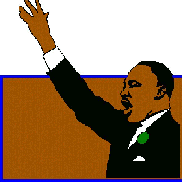
Next Page

Either split off from a Denomination or evolved from a Cult
Little or no formal training for officials and clergy
Next Page
Leaders must be 'called'
Members are primarily recruited by conversion
New members are asked to show proof of conversion by actions
Members are usually drawn from alienated segments of society
Conversion activities are directed at 15-35 age group
Worship emphasizes emotion, spontaniety, and participation
Beliefs emphasize a few key doctrines; not rituals or systematic theology
They are usually hostile toward political authorities
Most Sects evolve into Denominations or die out
With Denominational status, they gain respectability and lose their fervor and alienation
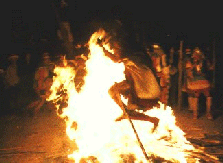
Next Page

A Cult is very loosely organized
A Cult possesses very few coherent doctrines
Next Page
Central focus of membership is a personal relationship with a charismatic leader
Participation and affirmation are required
Conversion activities are directed at young (15-35) and socially vulnerable
Activities are designed to reinforce commitment to group
Situational control is often used to manipulate members' participation
Members see the Leader as God's agent on earth
Members see their spiritual destiny through the Leader
After the death/retirement of the Leader, the Cult evolves into a Sect or dies out
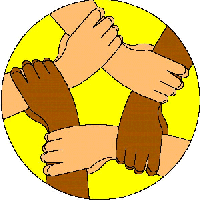
Next Page

What we think: Personal Beliefs
Compartmentalized Values, Articles of Faith, and Intellectual Integration
Next Page
What we do:
Rational Behavioral consistency
Ethics or Hypocrisy

How we feel: Personal Integrity
Guilt and Shame or Blessedness
Next Page
Processes of Change: Social Stratification and Religious Affiliation
Marx's Influence: False consciousness, Self determination, and Liberation Theology
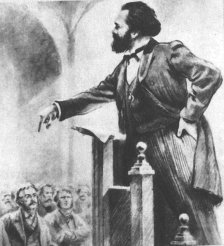
Next Page

Religion as an agent for:
Government
Business
Social Reform
Next Page
Does God favor Men?
.

Bishop Barbara Harris
.

Religious Movements: Millenarian Movements
Religious Nationalistic Movements (i.e., Fascism)
Next Page

Individual purposes: Make the wicked righteous
Make the ignorant learned
Make strangers friends
Enable Individuals to be at peace with themselves
Enable Individuals to share peace with others
Next Page

Societal purposes: Grounding of cultural values
Religious and social integration
Social cohesion
Next Page

Christianity

Two divisions: Catholic and Protestant
Monotheistic
1.9 billion world members
Strong Influence on industrialization
Substantial wealth and property
Next Page
Islam


Monotheistic
1.1 billion world members
Fastest growing Religion
Some Sects are extremely fanatical
Next Page
Hinduism
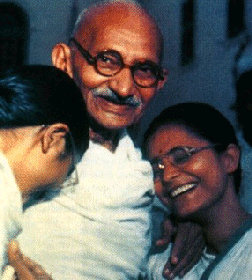
Mixed form of Religion
World's oldest current Religion
500 million world members
Emphasizes a life of care
Next Page

Emphasizes Enlightenment
Based on Life of Siddharta Gautama
330 million world members
Next Page

Emphasizes Moral Living
Based on life of K'ung Fu-tzu
Stresses balance and symmetry
200 million world members
Next Page
Judaism
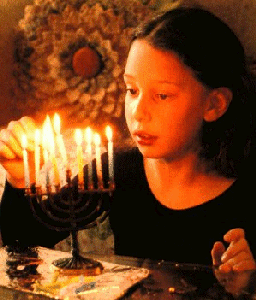
Religion associated with Old Testament Bible
Stresses God's covenant with the 'chosen people'
20 million world members
Next Page
.
Religiosity In Global Perspective
Survey Question: 'Do you gain comfort and support from religion?'
Nation ................................... % Yes
Ireland ................................. 83%
World Values Survey, 1994
United States ...................... 79%
Mexico ............................... 77%
Canada .............................. 62%
Great Britain ...................... 45%
Japan ................................. 41%
Norway .............................. 36%
Sweden .............................. 27%
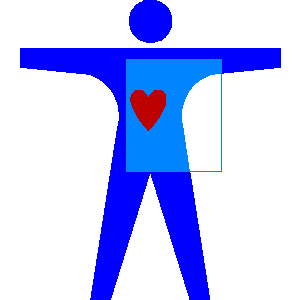
-
Religious Indentification in U.S., 1994
Religion ............................... % Preference
Roman Catholic .................................. 25.4%
Jewish .................................................... 2.0%
Other & No Response .............................. 4.2%
Protestant Denominations ...................... 59.3%
Baptist ................................................... 20.6%
Methodist ................................................. 9.4%
Luthern ...................................................... 6.7%
Presbyterian ............................................. 4.8%
Espicopalian ............................................. 2.2%
Other & No Denomination ....................... 15.6%
No Religion .............................................. 9.2%
Religion and Social Class
Religion, Ethnicity and Race

Fire at the Branch Davidian Compound
Next Page
Religion in a changing Society
Secularization
Civil Religion

Rev. Malcolm X
Next Page
Religious Revival
Membership gains in most Denominations
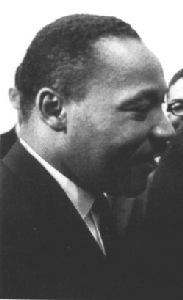
-
The Changing Face of Religion: A Report From Great Britain
Pecent of Change In British Church Memberships, 1985-1990
Religion ................................ Change
Christian Fundamentalist ......... +28%
Sikh ....................................... +22%
Jehovah's Witnesses ............... +19%
Orthodox ................................ +19%
Muslim ................................... +16%
Mormom ................................ +12%
Hindu ..................................... +8%
Jewish ..................................... -.9%
Prebyterian ............................ -1.5%
Anglican ................................. -7.5%
Roman Catholic ...................... -8%
.
Religious Fundamentalism
Fundamentalists:
.


.
Does Science Threaten Religion?

.
.
Looking Ahead: Religion in the Twenty-First Century
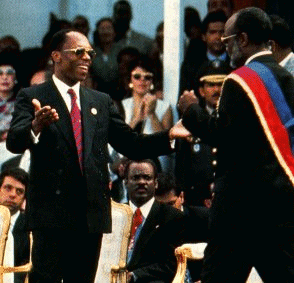
.
.

drewhurl@sprynet.com

Next Page
Produced at Bits & Bytes Farm, 1997
ClipArt provided by:
Photo provided by:
Program Designed and created by:
Drew Hurley
Santa Fe Community College
3000 NW 83rd Street
Gainesville, FL 32606
Imageline, Inc.
401 East Main Street, Suite 100
Richmond, VA 23219
Black Star News Service
2121 Avenue of the Americas
Washington, DC 20111

Go To Introductory Sociology Page